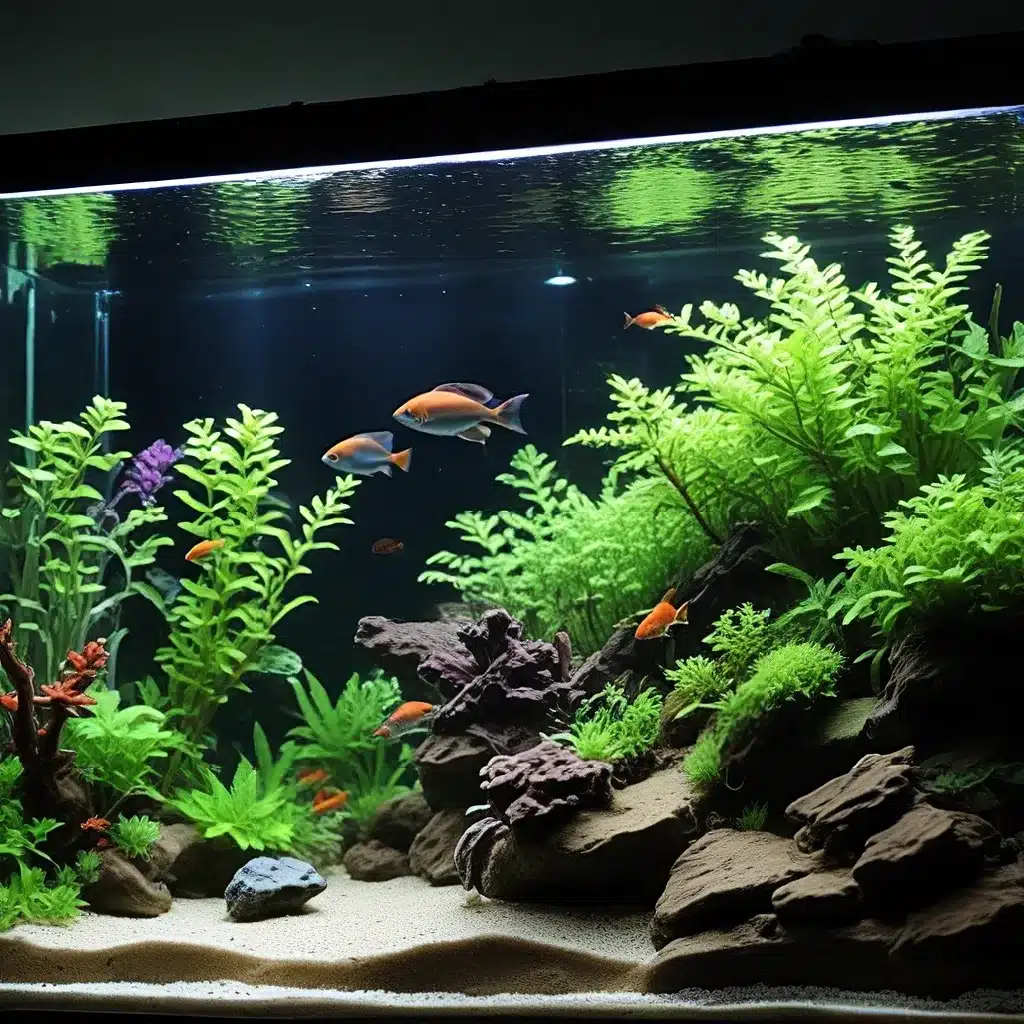
As the aquarium hobby continues to grow in popularity, the demand for eco-friendly and energy-efficient aquascaping solutions has never been more pressing. Sustainable aquarium practices not only contribute to the conservation of resources but also ensure the long-term health and stability of your aquatic setup. One of the most impactful areas to focus on is the selection and implementation of energy-efficient lighting for your tank.
The Importance of Eco-Conscious Aquascaping
Eco-conscious aquascaping is more than just a buzzword; it’s a thoughtful approach to crafting underwater landscapes that prioritize environmental sustainability alongside aesthetic charm. This method integrates principles such as minimal environmental disruption, the use of sustainable resources, and enhanced energy efficiency within the aquatic setup.
By choosing materials and technologies that reduce environmental impact, we can create visually stunning aquariums while supporting broader conservation goals. This commitment to sustainability extends beyond the selection of substrates and decorations; it also involves investing in equipment that enhances energy efficiency and optimizes resource utilization.
Embracing Energy-Efficient Lighting Solutions
One of the key components of an eco-friendly aquarium is the lighting system. Traditional aquarium lighting can be a significant contributor to energy consumption, leading to higher utility bills and a larger carbon footprint. Fortunately, advancements in lighting technology have enabled the introduction of energy-efficient alternatives that can dramatically reduce the environmental impact of your aquarium.
LED Lighting: The Sustainable Illumination Choice
LED (Light-Emitting Diode) lighting has emerged as a game-changer in the world of aquarium illumination. These innovative light sources offer a host of benefits that make them the preferred choice for eco-conscious aquarists:
-
Energy Efficiency: LEDs consume significantly less energy compared to traditional incandescent or fluorescent bulbs, often resulting in energy savings of up to 80% or more.
-
Longevity: LED lights have an exceptionally long lifespan, typically lasting for thousands of hours of use. This reduces the need for frequent bulb replacements, further minimizing the environmental impact.
-
Customizable Spectrum: LED lighting can be tailored to emit specific wavelengths of light, allowing you to closely match the natural lighting conditions of your aquatic inhabitants’ native environments. This promotes healthier plant growth and vibrant colors in your aquarium.
-
Reduced Heat Output: Unlike traditional bulbs, LEDs generate minimal heat, which can help reduce the load on your aquarium’s cooling or ventilation systems, further enhancing energy efficiency.
Integrating Lighting Controls for Maximum Efficiency
To maximize the energy-saving potential of your LED lighting system, consider incorporating automated control mechanisms such as timers and sensors. These devices ensure that your lights are only on when necessary, reducing unnecessary energy consumption.
Timers allow you to precisely schedule when your aquarium lights turn on and off, mimicking natural daylight cycles. This not only conserves energy but also supports the natural circadian rhythms of your aquatic plants and animals, promoting overall ecosystem health.
Sensors, on the other hand, can automatically adjust the lighting intensity based on ambient light levels or water conditions. For example, a sensor-equipped system may dim the lights during periods of high natural sunlight, further optimizing energy usage.
Maintaining an Eco-Friendly Aquarium
Sustainable aquarium practices go beyond just the selection of energy-efficient lighting. Regular maintenance and careful monitoring of your aquatic environment are crucial to ensuring the long-term health and efficiency of your setup.
Meticulous Water Quality Management
Maintaining optimal water quality is essential for the well-being of your aquatic inhabitants and the overall stability of your aquarium ecosystem. Regularly testing for ammonia, nitrite, and nitrate levels can help you identify and address any imbalances, preventing the need for excessive water changes or chemical treatments that can disrupt the natural balance.
Efficient Filtration and Cleaning Routines
Properly maintaining your aquarium’s filtration system and conducting regular cleaning tasks can significantly reduce energy consumption. Clogged filters or pumps can cause them to work harder, leading to increased energy use. By keeping your equipment clean and functioning efficiently, you can minimize this waste and ensure your aquarium operates at its optimal level.
Balanced Feeding Practices
Overfeeding can lead to waste accumulation, which can degrade water quality and require more frequent cleaning and filtration. Implementing controlled feeding practices by measuring food portions precisely can help minimize excess waste, reducing the energy needed for water changes and filtration.
Embracing the Future of Sustainable Aquascaping
Adopting eco-friendly practices in aquascaping is not merely about using the right materials or saving on energy. It’s about crafting a thriving aquatic environment that respects and replicates the natural world, proving that our hobbies can align with our values for conservation and sustainability.
By exploring innovative lighting solutions, optimizing equipment performance, and maintaining a balanced aquatic ecosystem, you can create a visually stunning and environmentally responsible aquarium that sets a new standard for the aquarium hobby. Dive into the world of sustainable aquarium practices and let your aquascaping vision take root in an eco-friendly future.
To learn more about creating your own eco-friendly aquarium, visit King Aquarium, where our team of experts is dedicated to guiding you through every step of the process.

